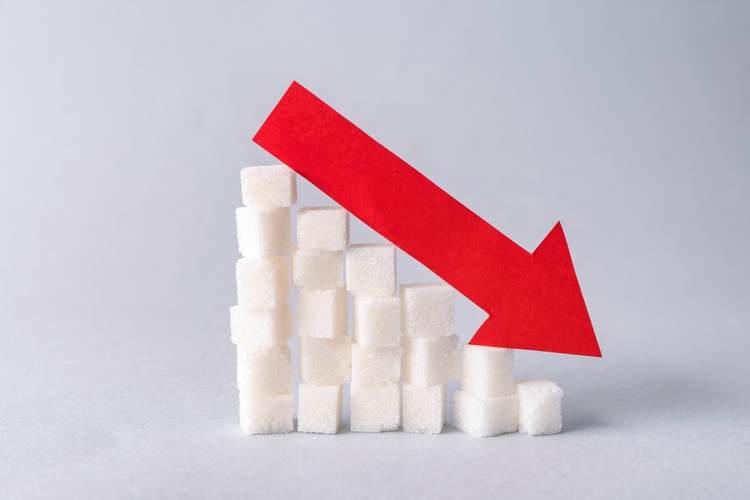
Unleash the power of your plate! Delve into the captivating realm of blood sugar control as our blog dissects the influence of food groups on those all-important levels. Get set for a balanced lifestyle like never before!

Blood sugar levels, those sneaky little molecules that determine our body’s energy game, are like the conductors of a symphony orchestra, ensuring our overall health and well-being hits all the right notes. Think of them as the maestros of our bloodstream, orchestrating a delicate balance that keeps us in tip-top shape.
When we chow down on a scrumptious meal, especially one loaded with carbs, our trusty digestive system gets to work, breaking down those tasty morsels into a superstar called glucose. This glucose then takes center stage, making its grand entrance into our bloodstream. But wait, there’s more! Just as the crowd goes wild, a hormone called insulin steps in, playing the role of the ultimate backstage manager. Produced by the pancreas, this superstar hormone escorts glucose from the bloodstream into our cells, where it’s transformed into energy for our bodies to rock and roll.
Now, let’s talk about the dark side of the sugar saga. When blood sugar levels hit the high notes, also known as hyperglycemia, it’s like a rock concert gone wrong. Prolonged periods of elevated sugar levels can wreak havoc on our health, leading to complications like diabetes, heart disease, kidney damage, and nerve issues. Picture this: increased thirst, frequent bathroom breaks, fatigue, and even a blurry vision that makes you feel like you’re watching a concert through a foggy lens.
But hold on, the sugar rollercoaster doesn’t stop there. When blood sugar levels hit rock bottom, known as hypoglycemia, it’s like a wild ride on a shaky rollercoaster. Suddenly, dizziness, confusion, and shakiness take center stage, threatening to steal the show. In extreme cases, hypoglycemia can even knock us out cold, turning our world into a pitch-black concert hall.
So, how do we keep this sugar symphony in perfect harmony? By maintaining stable blood sugar levels, we ensure our bodies receive a steady supply of energy, keeping our cells and organs jamming to their fullest potential. And that’s not all! Stable blood sugar levels also help us control our cravings, manage our weight, and reduce the risk of chronic diseases. It’s like having a backstage pass to a healthier and more fulfilling life.
By understanding the intricate dance of blood sugar regulation and the potential health risks that come with imbalances, we become the conductors of our own destiny. Armed with this knowledge, we can make informed choices about our diet and lifestyle, ensuring our bodies hit all the right notes. So, let’s grab our batons and take charge! With a balanced diet, regular physical activity, and the right medical care, we can rock this sugar symphony and create a masterpiece of well-being.
Food groups hold immense power in determining the delicate dance of our blood sugar levels. Unraveling the intricate web of how various foods impact this vital aspect of our health can empower individuals to make enlightened decisions about their diet, ensuring a harmonious balance in their blood sugar levels.
Carbohydrates, the notorious culprits lurking in bread, pasta, and even the sweet embrace of fruits, wield the greatest influence over our blood sugar levels. But not all carbs are created equal, my friend. Simple carbohydrates, like the sneaky sugars hiding in fizzy drinks and processed snacks, swiftly break down into glucose, sending our blood sugar on a wild rollercoaster ride. On the flip side, complex carbohydrates, such as the noble whole grains and legumes, take their time to be digested, granting us a gradual and steady rise in blood sugar levels.
Proteins, the unsung heroes found in the likes of meat, fish, and beans, are the gentle giants of the blood sugar realm. Unlike their carb counterparts, proteins don’t send our blood sugar levels skyrocketing when we indulge in their savory goodness. This makes protein-rich foods a precious gem in the treasure trove of a balanced diet for those seeking to master their blood sugar levels.
Ah, fats, the enigmatic players in the grand symphony of blood sugar regulation. Avocados, nuts, and the golden elixir known as olive oil hold the key to maintaining stability in our blood sugar levels. When paired with carbohydrates, these fats act as guardians, slowing down the absorption of glucose into our bloodstream. No sudden spikes, no unruly surges. Just a harmonious balance that keeps our blood sugar in check, while nourishing our bodies with the goodness of healthy fats.
And let us not forget the unsung hero, fiber, found in the humble abodes of whole grains, fruits, and vegetables. This mighty force slows down the digestion and absorption of carbohydrates, ensuring a gentle release of glucose into our bloodstream. No sharp peaks, no tumultuous waves. Just a steady flow that keeps our blood sugar levels in perfect harmony, promoting ultimate control over this vital aspect of our well-being.
While carbohydrates, proteins, fats, and fiber take center stage in the blood sugar saga, we mustn’t overlook the supporting cast. The vitamins, minerals, and other nutrients nestled within the embrace of fruits, vegetables, and lean proteins contribute to our overall health, indirectly influencing the delicate dance of blood sugar control.
By unraveling the intricate tapestry of the role each food group plays in the symphony of blood sugar regulation, we can embark on a journey of informed choices. Embracing a diverse array of foods from different groups, with a focus on whole and unprocessed options, becomes our compass in maintaining stable blood sugar levels and nurturing our overall well-being. So, my friends, let us embark on this culinary adventure, where knowledge and taste intertwine to create a symphony of health.
Blood sugar-related health issues are sweeping across the United States like an unstoppable force. Astonishingly, statistical data reveals that a staggering 34.2 million Americans are grappling with diabetes, while an additional 88 million are teetering on the edge with prediabetes. These numbers are not just alarming, they are a piercing wake-up call, demanding our immediate attention to unravel the intricate relationship between diverse food groups and blood sugar levels.
Enter the typical American diet, a notorious culprit characterized by an insatiable appetite for processed foods, sugary drinks, and refined carbohydrates. This dietary disaster wreaks havoc on blood sugar levels, as these devilish foods are packed with simple carbohydrates that swiftly transform into glucose, sending blood sugar levels on a rollercoaster ride. The constant fluctuation becomes a breeding ground for insulin resistance, paving the treacherous path towards diabetes and a host of other health issues.
But let’s zoom in on the villains of this dietary drama – the high-carbohydrate foods that are commonly devoured across the nation. Think of the notorious white bread, the sugary cereals that tempt us in the morning, and the sweetened beverages that seduce us throughout the day. These sneaky culprits are digested and absorbed at lightning speed, causing blood sugar levels to skyrocket. It’s worth noting that portion control is a key player in the blood sugar game. Even seemingly innocent carbohydrates like fruits and whole grains should be consumed in moderation to prevent those dreaded sugar spikes.
Now, let’s talk about the heroes that can save the day – balanced meals. Picture a plate that harmoniously combines carbohydrates, proteins, fats, and fiber. This dream team is essential for maintaining stable blood sugar levels. By introducing lean proteins, healthy fats, and fiber-rich foods like vegetables and whole grains, we can slow down the digestion and absorption of carbohydrates, effectively thwarting those sudden sugar surges.
But wait, there’s more! Cultural and regional food preferences also have a role to play in this blood sugar saga. We mustn’t forget the impact of our beloved traditional dishes and ingredients on our precious blood sugar levels. Fear not, for there is a way to savor the flavors of our heritage while keeping our blood sugar in check. By making small tweaks and embracing healthier alternatives, we can indulge in our cultural and regional favorites without sacrificing our stable blood sugar levels.
In the grand tapestry of health, understanding the impact of diverse food groups on blood sugar levels is the key to unlocking a brighter future. Armed with knowledge about the prevalence of blood sugar-related health issues, the treacherous pitfalls of the typical American diet, and the specific impact of different food groups, we can make informed choices about our diet and lifestyle. With portion control as our trusty sidekick, balanced meals as our secret weapon, and a nod to our cultural and regional roots, managing blood sugar levels becomes an achievable feat. So let’s embark on this journey towards a healthier, more fulfilling life, one bite at a time.
© 2023 All rights Reserved by EveryDaySeniorLife